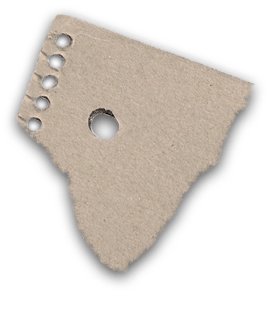

| sweet: | 1.1 |
On the small patio of my new home are dozens of slashes on the concrete. The slashes are wood residue, spots where logs hit the deck, so to speak, when flung from the driveway. Each summer thirteen cords of wood are dumped in a chaotic, daunting heap at the top of our driveway. The property slopes downward from the driveway, and my lover throws the wood – every single log, thirteen cords’ worth of logs – from that pile towards the patio, where they create a new pile.
As the wood crashes onto the patio it leaves marks, which are the equivalent of knee-skin, palm-skin left on a sidewalk after a fall. The marks are hieroglyphic; they comment on her labor, which is born of necessity and care. To keep warm, we need wood. The wood requires arrangement. My lover imposes that order. These marks are a history of her work.
They will be washed away by the next rain.
My teacup is stained. Inside, washed up and down the white porcelain, are the sepia markings of the dozens of cups of tea I’ve savored over the last few weeks. I could scrub the stains off daily, or periodically bleach them out. But I like them. And so I perfunctorily wash the cup but allow the build-up – at least, until guests are anticipated. And then I bleach.
The painted body of my car was damaged by six years in the relentless sun of southern Arizona. The finish looks burnt. The green paint gives way to the silver underneath. If you rub a spot on the hood, residue will come off. The way moth or butterfly wings leave dusty scales on your fingertips.
Claw marks on the desktop. Where the cat got scared.
Thread-like veins on her thigh, blue river.
The inky script inside my mother’s pen case.
The tattoo on the ankle. The tattoo at the wrist. The tattoo on the hip.
The torn corner of the framed print that survived the fire.
The white scars on her shoulder. My wrinkled linen shirt after we hugged.
The message left on the mirror, drawn in the steam.
The tender indentation of flesh, her finger, when they removed the wedding ring after fifty years of widowhood.
Mark
Synonyms: stain token symptom demarcation indication
Antonyms: erase expunge efface redact revise delete cancel
As I write this, the southwest city where I once lived is being marked by fire, decimated by 80- thousand acres of flame. My body is being marked by rain in my new city in the northeast, is being marked by a new love even as I covet memories of marks on other bodies, other lovers.
When I was five years old I had a silver cap on a baby tooth. I loved that sliver of silver – I didn’t know it was a cap, thought I had a rare, valuable tooth – and I couldn’t wait for it to fall out so I could save it forever. It seemed like a treasure, held in my mouth, a part of me.
The tooth fell out one summer and landed in the grass of a side yard adjacent to our house. Several of us searched, but we couldn’t find the silver speck. It was like an erasure, like it had never existed.
Even erasures leave marks.
On my right arm, an inch-long scar. The simplest version (“All surgical procedures, no matter how common, carry the risk of poor outcomes, including death…”) of cardiac surgery: a catheter’s wire snaked through a vein, up into my heart where a tiny camera scoped its walls and hollows. Inside: a hole.
We say “negative” when something is not as we wish it to be – “That was a negative experience.” It often means something has been taken away, is missing. Try to remember that it was there once.
On the news: “She turned up missing.” “We found her missing.” “The victim was discovered missing.”
The absence leaves a mark.
The absence is substantial.
The absence becomes a presence.
Thank god, because so many presences become absences.
I was a kid who tried to erase my shadow; I spun and danced in the light trying to be only me, without darkness. It didn’t work.
Blood stains.
Bite marks.
Scratches.
The shadow of a slap.
Bruises.
Fingerprints. Tear drops. (Perhaps there is no spot on my body that has not been altered by one or the other).
Dark spots in the eyes after looking at the light.
From a non-reputable source: “Erasure poetry is a form of ‘found poetry’ created by erasing words from an existing text in prose or verse and framing the result on the page as a poem.”
I found your words. I erased some. Now they’re mine.
The mark X was commonly used to denote a signature for those who could not spell.
In mathematics, x represents an unknown.
An x represents a kiss.
What is it about a kiss that carries with it the unknown? What is it about a kiss that leaves its mark?
I was a kid who loved to write names in the sand. I knew exactly where to draw them: far enough away that the ocean water could not reach… for a while. I liked the anticipation, the inevitable meeting of wave and writing. I liked the annihilation. I liked the temporal nature of my marks: “Donna loves __________.”
How many times has the tide washed away my love?
| ...return to Table of Contents |


